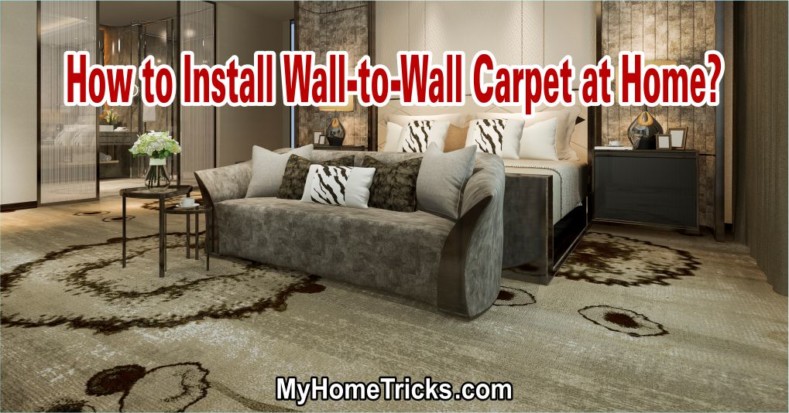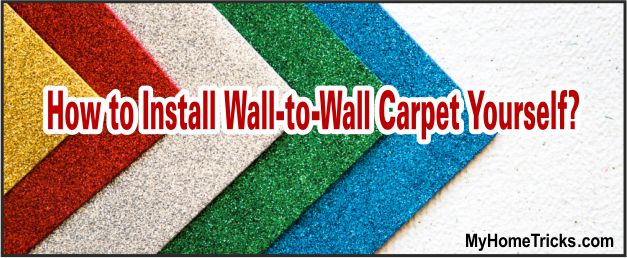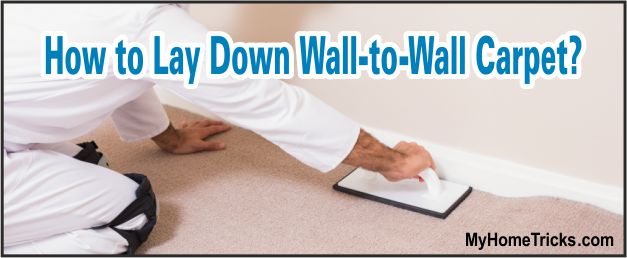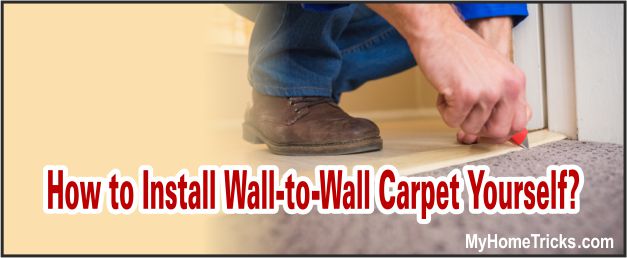How to Lay Carpet
Whether you’re renovating your home or simply replacing old, worn-out flooring, wall-to-wall carpeting can be an excellent option. It’s comfortable, and cozy, and can add a touch of elegance to any room. However, laying a wall-to-wall carpet requires some planning and preparation to ensure it’s done correctly. In this article, we’ll discuss how to lay two types of wall-to-wall carpeting: burlap-backed carpet and foam-backed carpet.
What is Burlap-Backed Carpet?
Before we dive into the installation process, it’s essential to understand what burlap-backed carpet is. Burlap is a coarse, woven fabric typically made from jute or hemp fibers. It’s often used in landscaping and agriculture to wrap plants and trees, but it can also be used as a backing material for carpeting.
Burlap-backed carpet is a type of carpet that has a layer of burlap fabric attached to the back. The burlap adds stability and strength to the carpet, making it a popular choice for high-traffic areas. However, burlap-backed carpet requires a bit more work to install than other types of carpeting.
How to Lay Burlap-Backed Carpet
Here are the steps to lay burlap-backed carpet:
- Measure the room: Measure the length and width of the room to determine how much carpet you need. Add a few extra inches to each measurement to ensure you have enough carpet to work with.
- Prepare the subfloor: Ensure the subfloor is clean, dry, and level. Remove any old carpeting or debris, and fill any cracks or holes with a floor-leveling compound.
- Install the tackless strips: Tackless strips are thin pieces of wood with sharp tacks on one side. They’re used to hold the carpet in place around the perimeter of the room. Lay the strips around the room’s edges, leaving a gap of about half an inch between the strip and the wall.
- Lay the carpet pad: Carpet pad provides cushioning and insulation for the carpet. Roll out the pad across the entire floor, cutting it to size with a utility knife. Overlap the edges of the pad by a few inches and secure them with tape.
- Cut the carpet: Roll out the carpet and cut it to the size and shape of the room, leaving a few extra inches on all sides. Use a carpet knife to make precise cuts.
- Attach the carpet to the tackless strips: Begin at one corner of the room and lay the carpet over the tackless strips. Use a knee kicker tool to stretch the carpet toward the opposite wall, then press the carpet into the tacks on the tackless strip. Work your way around the room, using a carpet stretcher tool to ensure the carpet is stretched tightly.
- Trim the excess carpet: Once the carpet is secured to the tackless strips, use a carpet knife to trim the excess carpet along the walls.
- Finish the edges: Use a carpet edge trimmer tool to trim the excess carpet along the walls, leaving a neat, professional-looking edge.
What is Foam-Backed Carpet?
Foam-backed carpet is a popular flooring option that is known for its durability and comfort. It is a carpet that has a layer of foam attached to its underside, providing extra cushioning and insulation. Installing foam-backed carpet can be a great way to improve the look and feel of a room.
Foam-backed carpet is a type of carpet that has a layer of foam attached to its underside. This foam layer provides extra cushioning and insulation, making the carpet more comfortable to walk on and warmer in colder weather. Foam-backed carpet is available in a wide range of colors and styles, making it a popular choice for both residential and commercial properties. It is often used in high-traffic areas like hallways, living rooms, and bedrooms, as it can withstand heavy foot traffic.
One of the main benefits of foam-backed carpet is that it is easy to install. Unlike traditional carpets, the foam-backed carpet does not require a separate underlay, which can save time and money. Additionally, the foam layer can help to reduce noise levels in a room, making it a great option for apartments or other shared living spaces.
How to Lay Foam-Backed Carpet?
Laying foam-backed carpet is a relatively straightforward process that can be done by homeowners with basic DIY skills. Here are some steps on how to lay foam-backed carpet.
- Step 1: Prepare the Room
Before laying the foam-backed carpet, you need to prepare the room. Start by removing any furniture or objects from the area where the carpet will be installed. Make sure the floor is clean and free of debris, as this can affect the quality of the carpet installation. - Step 2: Measure the Room
The next step is to measure the room. This will help you determine how much carpet you need to buy. Measure the length and width of the room, and then add an extra few inches to each measurement to allow for any errors or discrepancies. - Step 3: Cut the Carpet
Once you have your measurements, it’s time to cut the foam-backed carpet to the correct size. Lay the carpet out on a flat surface, and use a straight edge and a carpet knife to cut it to the correct size. Make sure you leave enough excess carpet around the edges of the room to allow for trimming later on. - Step 4: Apply Adhesive
Once the carpet is cut to the correct size, it’s time to apply adhesive to the foam backing. Use a notched trowel to spread the adhesive evenly over the entire surface of the foam layer. - Step 5: Lay the Carpet
After applying the adhesive, it’s time to lay the carpet. Start by positioning the carpet in one corner of the room, making sure it is straight and centered. Press the carpet down firmly, working your way across the room to smooth out any wrinkles or bubbles. - Step 6: Trim the Excess Carpet
Once the carpet is laid, you’ll need to trim the excess carpet around the edges of the room. Use a sharp utility knife to trim the carpet to the correct size, making sure to leave a small gap between the carpet and the wall to allow for expansion. - Step 7: Finish the Edges
Finally, it’s time to finish the edges of the carpet. Use a carpet trimmer or a stair tool to tuck the edges of the carpet into the gap between the carpet and the wall. This will create a clean, finished look.
In conclusion, laying foam-backed carpet is a simple process that can be done by homeowners with basic DIY skills.
Laying Flooring on Stairs
Laying flooring on stairs presents the challenge of working both vertically and horizontally, which requires more trimming and results in more waste. Therefore, you should allow more time for laying flooring on stairs. Below are some tips for different types of materials:
- Using natural-fiber flooring: If you want to cover stairs with materials such as seagrass or jute, follow the manufacturer’s guidelines carefully. The rigidity of these materials varies, affecting their ability to fit stair profiles and requiring different laying methods.
- Laying burlap-backed carpet: Attach an appropriate length of tack strip to the bottom of each riser and at the back of each tread to ensure that the carpet is securely fastened to each stair.
- Laying foam-backed carpet: Staple along the back of each tread to attach the foam-backed carpet to the stairs and prevent it from slipping.
- Starting at the top: When laying the stair carpet, place the first length firmly on the landing before continuing downstairs.
- Placing stair rods: Install a stair rod at the tread-riser junction to reduce the possibility of the carpet slipping. You can paint the rods to match the carpet’s color to make them less noticeable.
- Reversing carpet: To extend the life of your stair carpet, take it up and reverse it top to bottom before it starts to wear in places, assuming that the dimensions of the treads and risers are the same. This will switch the treads and risers.
- Finishing at the Bottom Trim the end of a stair carpet length to fold it under the lip of the bottom tread, cutting a jagged edge to mold it around the curved edge. Secure the carpet with tacks or a staple gun, and then fit a final piece of carpet over the jagged edge.








